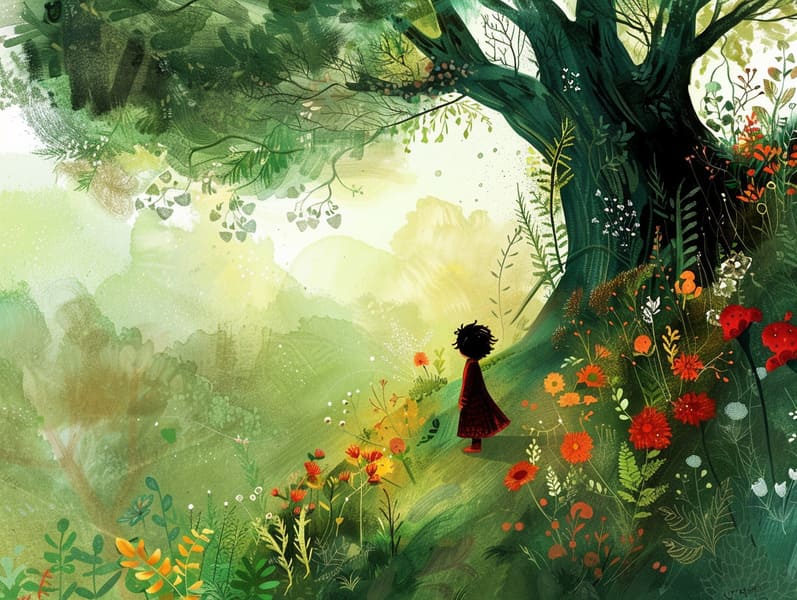The Inception of Fairy Tales for Kids with Its Persistent Grandeur.
The Inception of Fairy Tales for Kids with Its Persistent Grandeur.
Blog Article

Grimm's fairy tales have deep roots. These tales have been told from one generation to the next far before they were ever inscribed. They came from a variety of cultures, including Indigenous traditions. They were initially told among older generations, often carrying themes and messages relevant to the societal norms and beliefs of the time.
The Brothers Grimm, Jacob and Wilhelm Grimm, were among the first to assemble many of these beloved stories. Their anthology, "Grimm's Fairy Stories," included stories like "The Story of Cinderella," "Little Brother and Little Sister," and "The True Story of Snow White," which have since become classics in the world of children's fairy tales. Similarly, Hans Andersen's fanciful tales, such as "The Sea Maid," and "The Story of the Ugly Duckling," have enchanted hearts worldwide, ensuring their place in the pantheon of beloved fairy tales.
Though they are old, these stories remain as significant as ever, especially as kids' bedtime tales. These magical stories are now available in multiple formats, including colorful picture books, captivating animations, and free fairy tales online.
Their ongoing significance can be credited to several enchanting factors:
Vital Lessons: Ancient fairy tales often provide important moral lessons. Tales like "The Wolf and the Liar" teach the value of sincerity, while "The Tortoise and the Hare" exemplify the virtues of steadfastness and unassuming nature. These stories offer the young clear distinctions between ethical and unethical, building their moral compass in a gentle yet significant way.
Kindness and Comprehension: Old fairy tales frequently showcase beings facing challenges and problems, motivating kids to resonate with their struggles and cheer for their triumphs. For instance, "Beauty and the Beast" conveys the value of seeing inner beauty to understand the real character of a individual, advancing insight and awareness.
Cultural Awareness: Many classic fairy tales are interwoven with the cultural contexts from which they grew. Immersing in these fairy tales can provide fascinating glimpses into different customs, developing a sense of cultural awareness and respect.
Inventiveness and Imagination: The enchanted elements in timeless fairy tales—fairy godmothers—kindle children’s fantasies. These stories bring readers to fantastical realms, promoting creative ideas and a sense of magic that persists a lifetime.
Old fairy tales are not only spellbinding but also enlightening. They provide fascinating tools in developing various mental and emotional abilities in young readers. When classic fairy tales are voiced, they develop language development by introducing new word meanings and sophisticated sentence structures. This practice also boosts auditory skills and attention, as children stay focused, excited to see what happens next.
Furthermore, examining the themes and characters of ancient fairy tales can strengthen cognitive skills and problem-solving abilities. Young ones are instructed to identify patterns, foresee events, and catch on to cause and effect. These explorations also promote young ones say their thoughts and feelings, adding to their emotional intelligence.
In today’s online age, the presence of internet fairy tales has made these narratives more accessible than ever. Websites and software share get more info vast collections of old fairy tales that can be accessed or listened via anytime, anywhere. Fairy tales told out loud are particularly liked, supplying an engaging way for little ones to savor these charming tales. Audio stories and narrated videos transport characters and settings to life, often joined by entrancing background sounds and songs that improve the tale experience.
The lasting allure of classic fairy tales lies in their ability to modify to present days while keeping hold of their essential themes. Contemporary retellings of these fairy tales often spotlight more representative characters and modern settings, making them familiar to today’s audience. However, the essential messages of bravery, understanding, and righteousness remain unchanged, continuing to reach audiences of all ages.
Fairy tales also offer a sense of serenity and knowability. They afford a ordered narrative with a recognizable beginning, middle, and end, often ending with the closure of conflicts and the triumph of virtue over corruption. This steadiness can be encouraging for kids, gifting a sense of steadfastness in an unpredictable world.
Classic fairy tales continue to spellbind and educate new generations, maintaining their spell and value in modern society. As nighttime stories for kids, they afford a perfect blend of wonder and wisdom, fostering moral values, empathy, and creativity. The presence of internet fairy tales and the in demand status of fairy tales narrated guarantee that these timeless fairy tales remain within reach to new generations.
By preserving and making known these stories, we continue to praise the rich tapestry of fables and cultural heritage. Whether you are viewing a gorgeously illustrated book, perusing a cyber collection, or hearing an read-aloud book, the appeal of timeless fairy tales is always within reach. These narratives reveal of the enduring magic of fairy tales and its ability to gather us across time and space.
Be it you are discovering a artistically illustrated book, viewing a cyber library, or listening through an read-aloud story, the grandeur of old fairy tales is always within reach.
These tales demonstrate of the perpetual spell of tales and its ability to hold us together across generations and cultures, establishing a link that charms and informs alike.